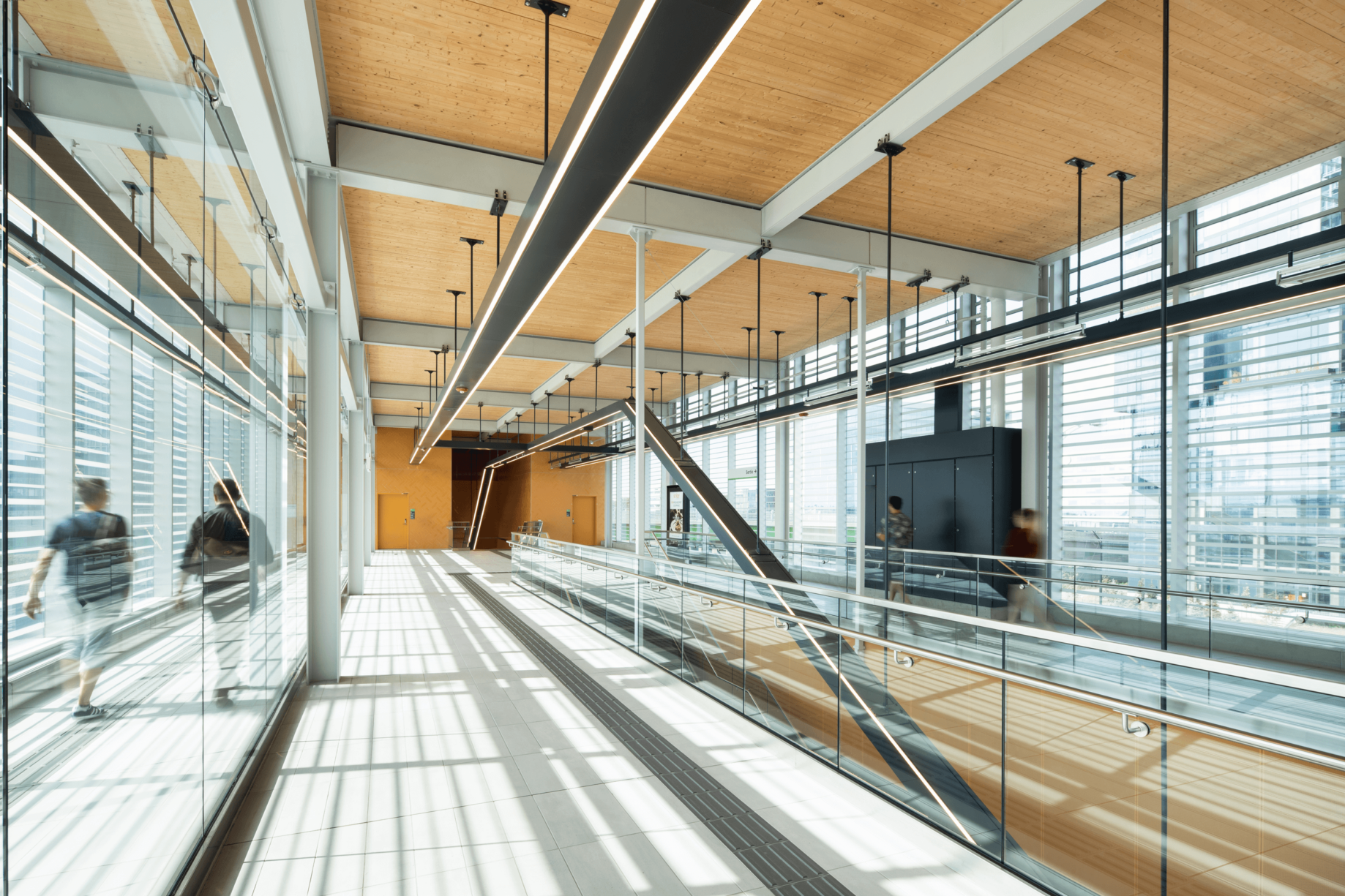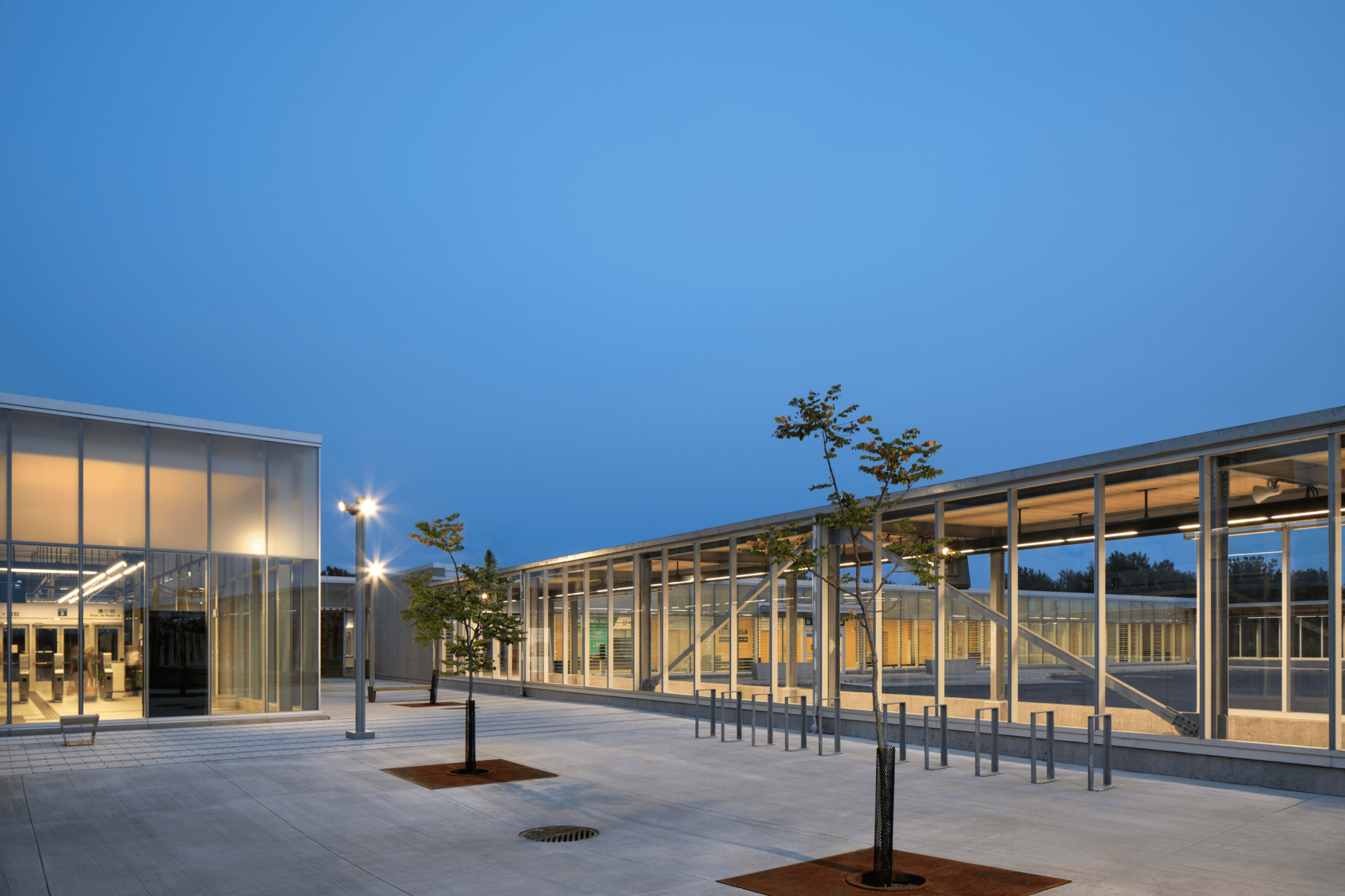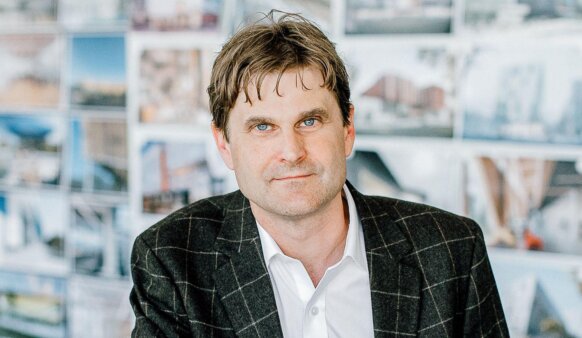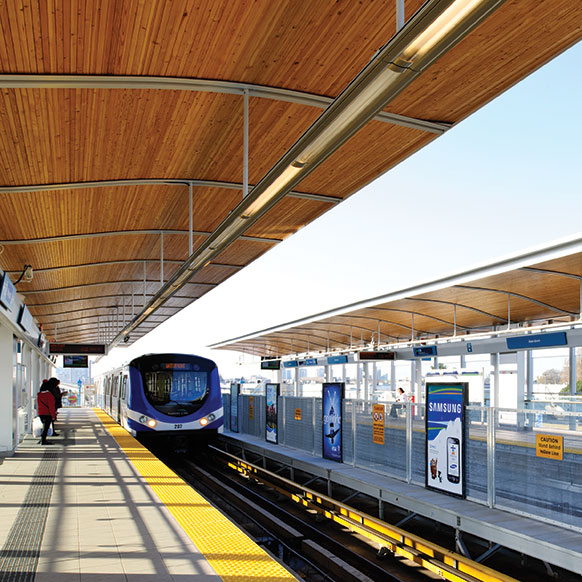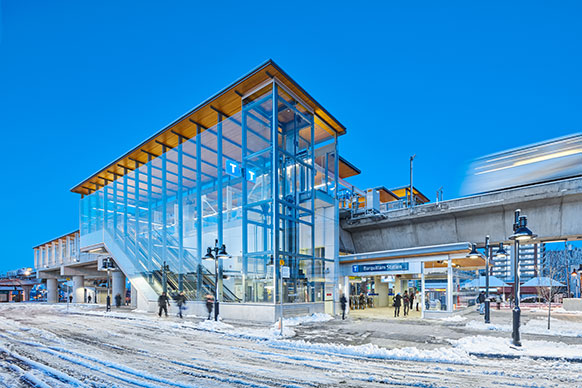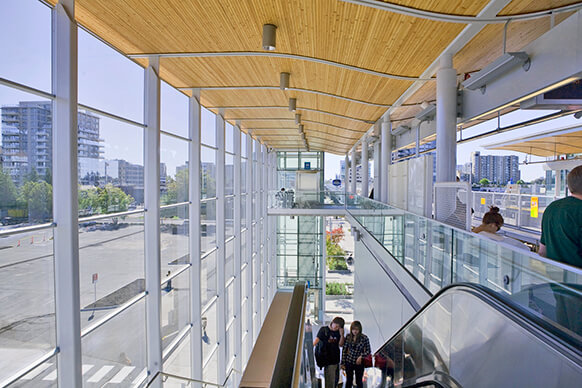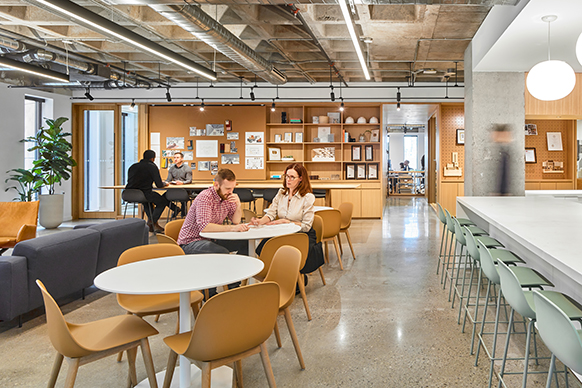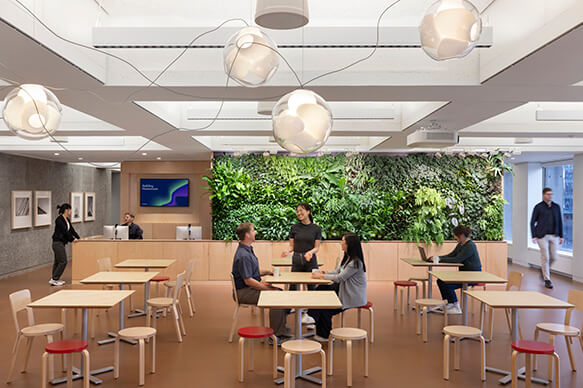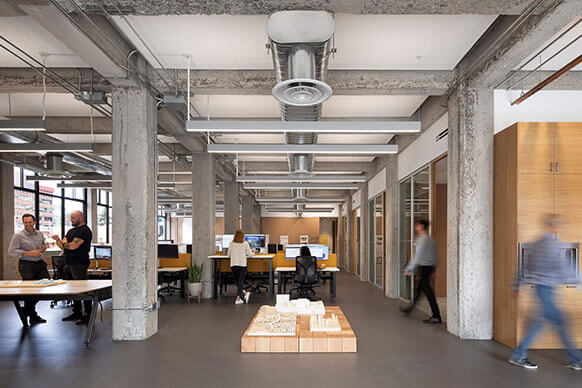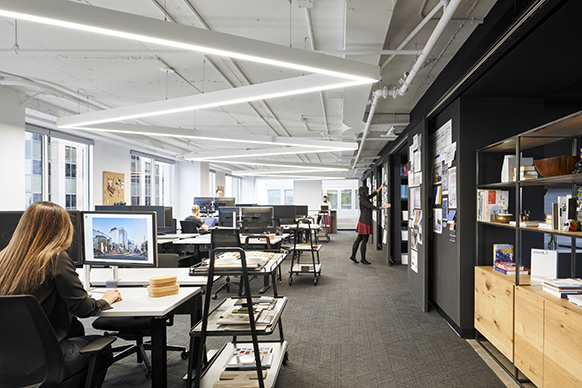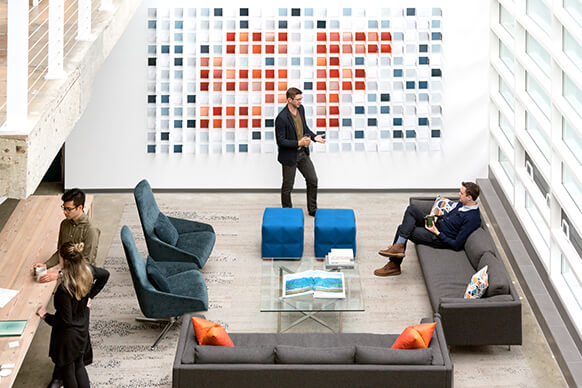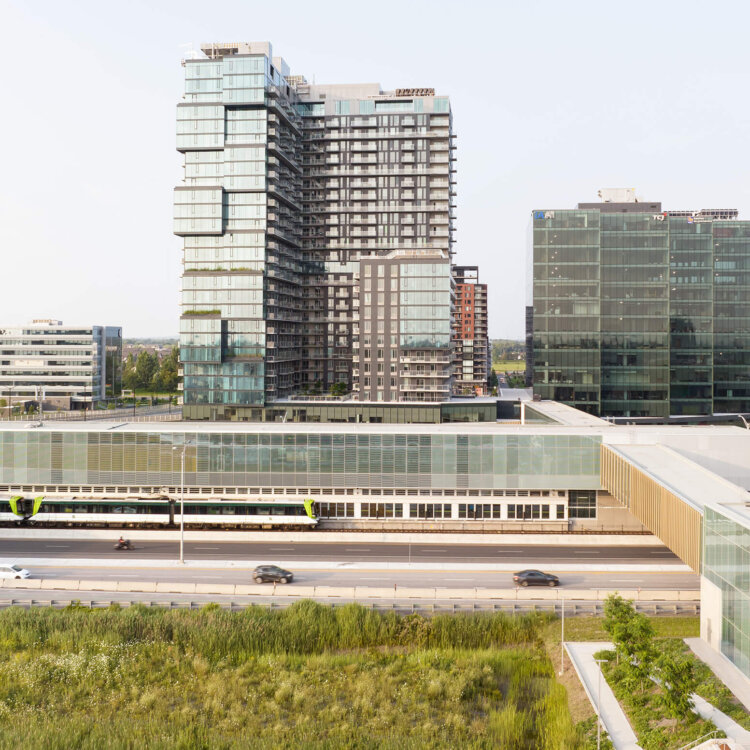
Réseau Express Métropolitain
The largest public transportation infrastructure project for the metropolitan area since 1966, the REM project is re-writing the story of Montréal’s future through transit. At 27 stations across 67 kilometers, it will be one of the largest automated transportation systems in the world. Equally impressive, the project has broad aspirations related to culture, identity, and sustainability. So how do you design a project of such scale and significance?
You start with a clear concept. Working with joint venture partners Lemay and Bisson Fortin, we developed a system-wide design that captures the speed of trains and rhythm of the passing landscape to create a new identity for the line and the city. We developed a consistent set of design details and modular components that will ensure a built identity and a sense of familiarity for passengers across the line. Each of these components came together in a variety of ways to address the unique topography of each station’s context. A colour and material palette reflecting local landscapes was also developed to provide variety across stations and express the diversity across each neighbourhood this transformative line passes through.


Horizontal lines representing the speed of travel are depicted on the facades of the platform volumes to manifest the movement of trains. The rhythmic vertical lines, expressed on plazas and the facades of vertical circulation volumes that connect stations to communities, represent the kinetic succession of scenery. Together, this system-wide design captures the speed of trains and rhythm of passing landscape to create identity.
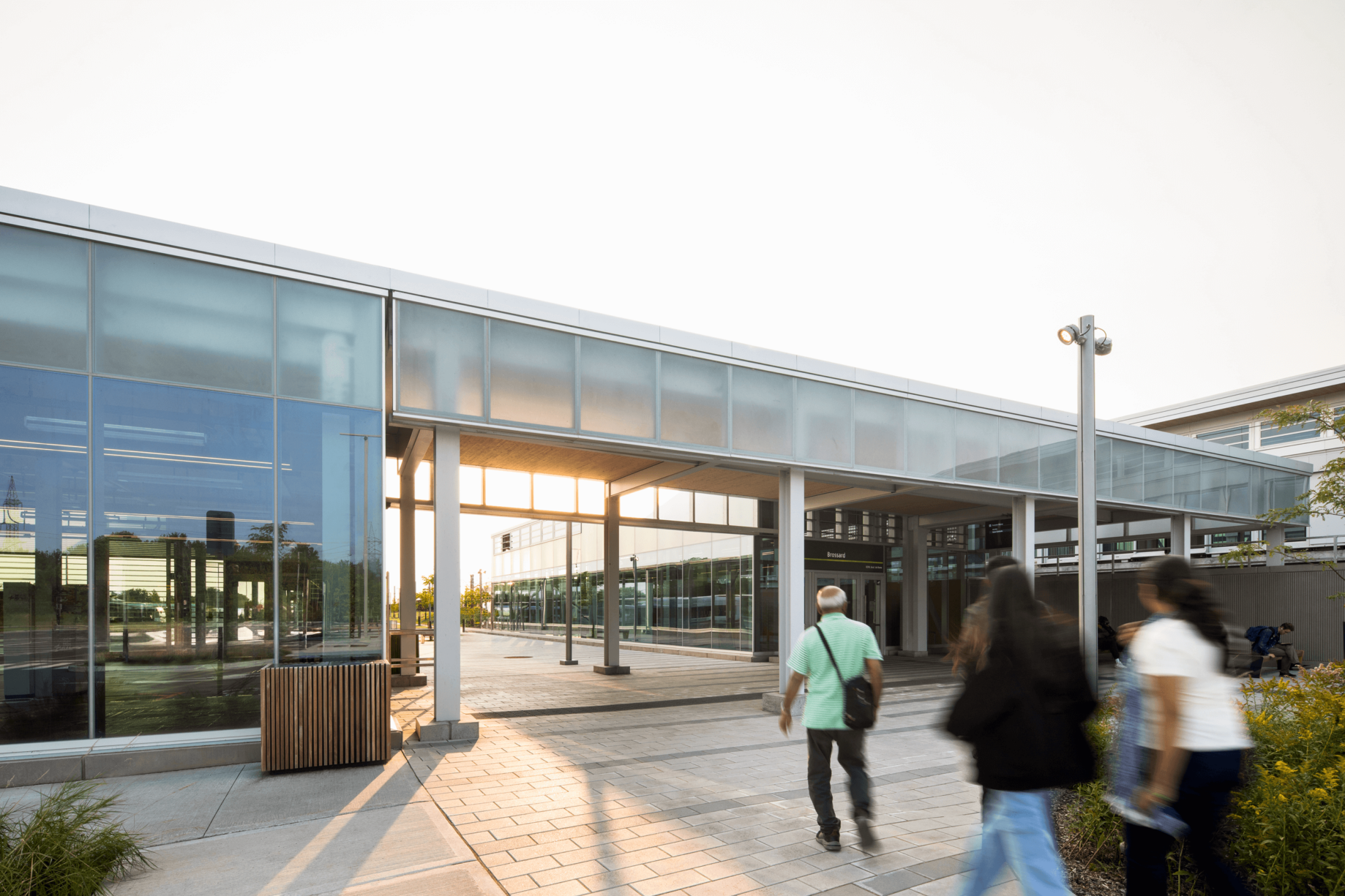

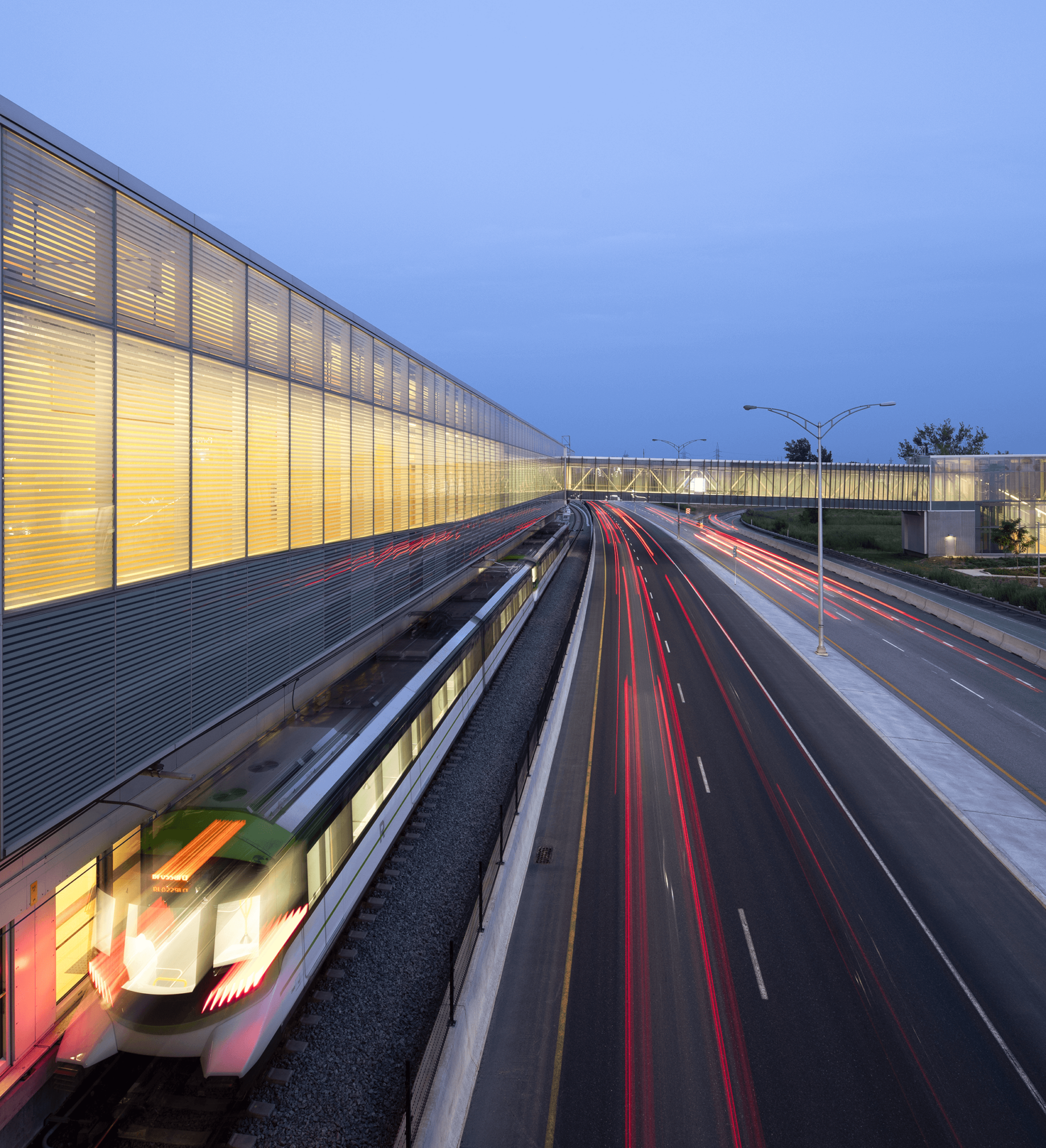
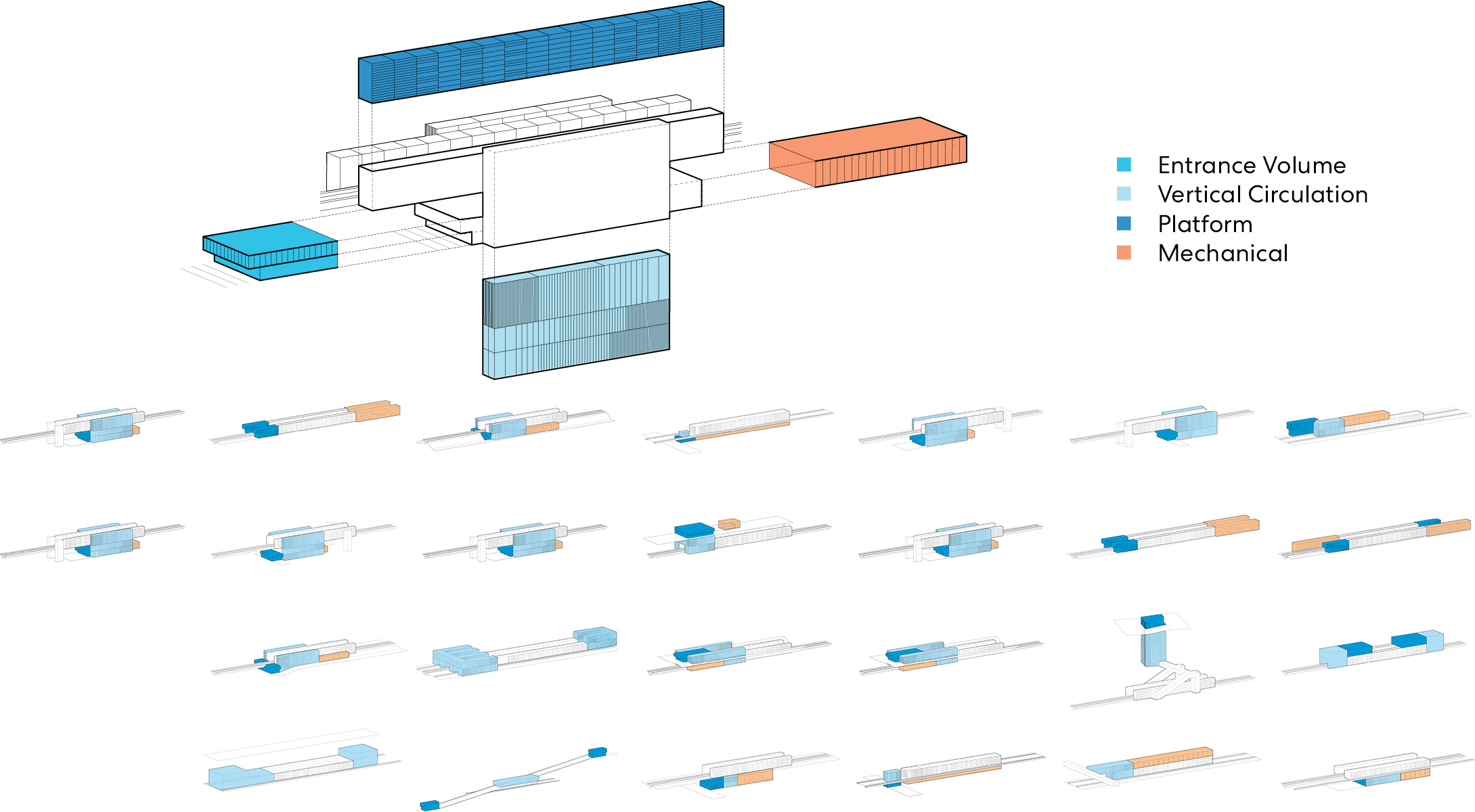
We parceled key spaces within each station into four distinct volumes: entry, concourse, circulation, and platform. Once identified, the volumes were designed as a kit of parts to simplify programming and construction across all station types and to establish a common, line-wide identity. This clear system of components allowed our team to configure a large array of station types, whether elevated, burmed, at grade, trenched, or underground.
